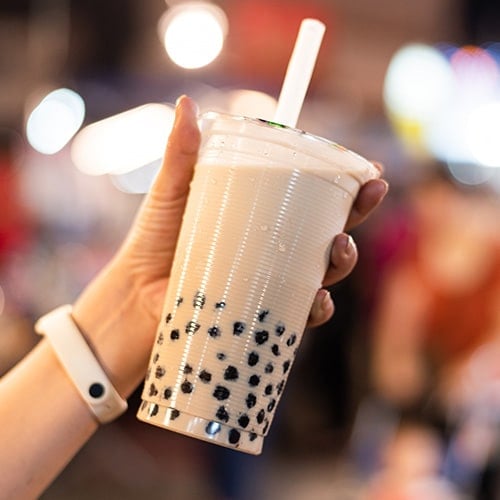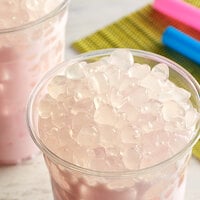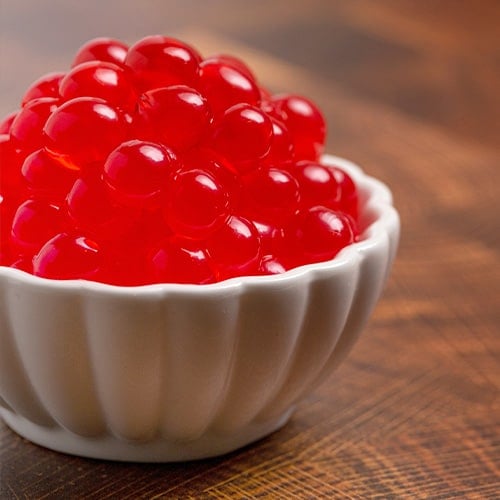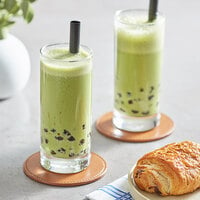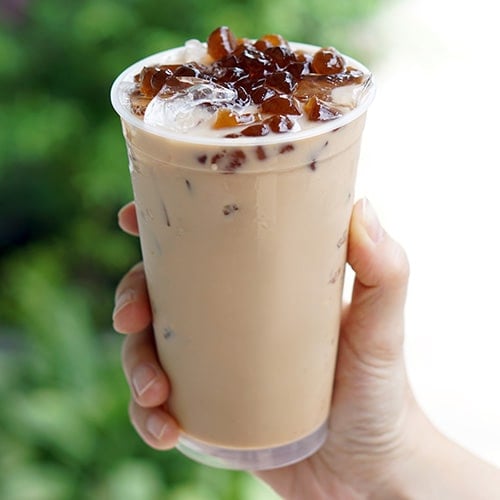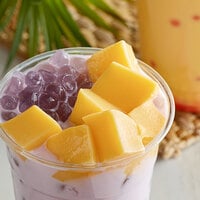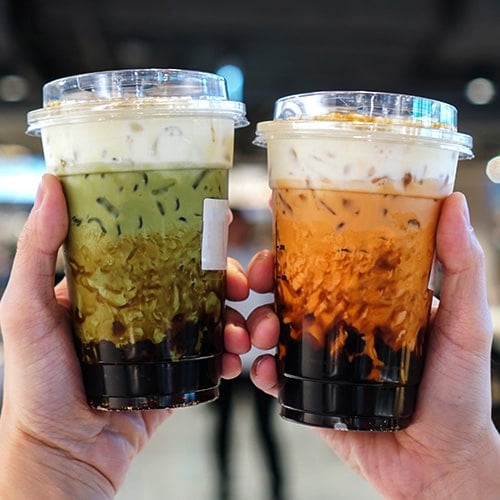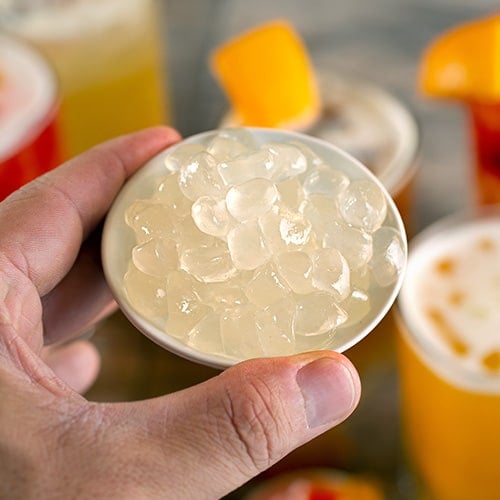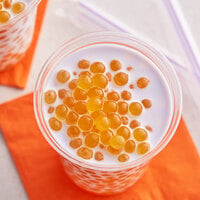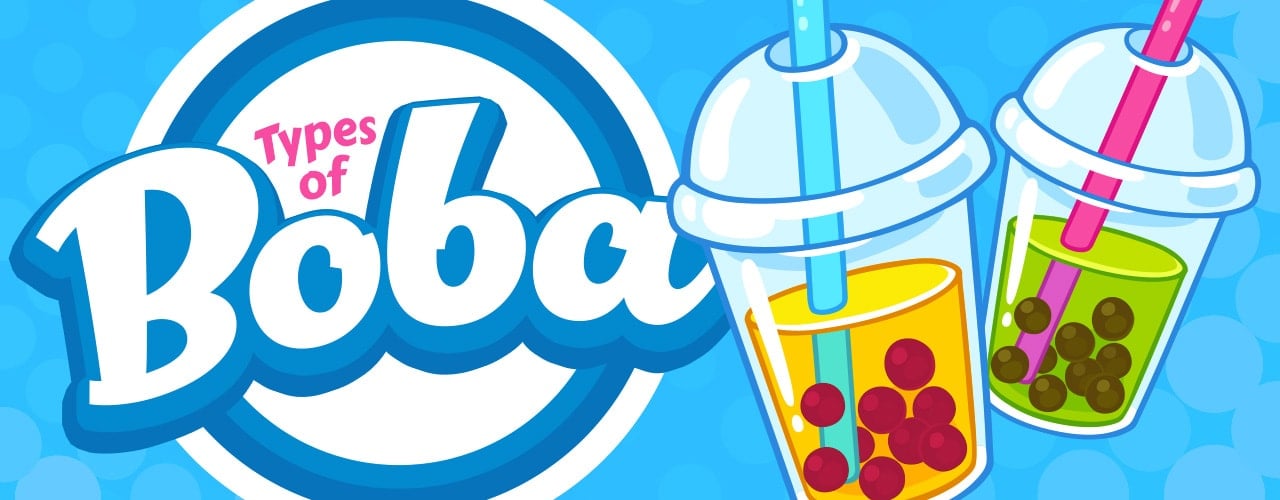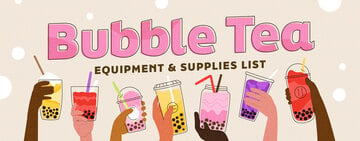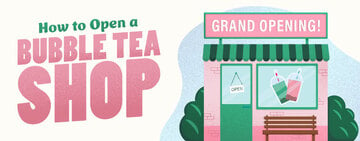Originating in Taiwan, bubble tea has become a global sensation, especially in Western countries where its appeal has been steadily on the rise. Customers are increasingly drawn to bubble tea's unique flavors and textures, making it a sought-after beverage choice. Its rising popularity allows entrepreneurs to tap into a trendy market. If you're considering starting a bubble tea business, our startup guide provides a step-by-step roadmap from conception to grand opening.
Shop All Bubble Tea Supplies and Equipment
Click any of the tips below to skip to the bubble tea business tip you need most:
Choose a Bubble Tea Business Concept
Write a Boba Tea Business Plan
Obtain Funding for Your Boba Tea Shop
Select a Bubble Tea Shop Location
Acquire Licenses and Permits for Your Boba Shop
Bubble Tea Equipment and Ingredients
Hire and Train Staff for Your Bubble Tea Business
Advertise Your Boba Shop
Opening Your Bubble Tea Shop
What Is a Boba Tea Shop?
A bubble tea, or boba tea, store is a specialty tea shop that serves a variety of refreshing and customizable bubble teas. Bubble tea is a Taiwanese drink that typically consists of a base tea, milk, sweetener, and chewy tapioca pearls served with a large straw for sipping and enjoying the pearls. The menu includes classic flavors, such as milk, green, black, and fruit tea. Customers can customize their drinks by choosing the type of tea, sweetness level, ice level, and toppings like tapioca pearls, fruit jelly, or popping boba. In addition to traditional bubble teas, many bubble tea shops offer specialty drinks like blended frappes, smoothies, and milkshakes that incorporate unique flavors and ingredients. Some shops also serve snacks and desserts to complement their beverage offerings, such as mochi or bubble waffles.
How Much Does It Cost to Open a Boba Shop?
If you're contemplating opening a bubble tea business, you're likely wondering how much it will cost. The initial investment required to start a boba shop can vary significantly depending on the business model and location. Generally, the cost to open a bubble tea shop can range anywhere from $15,000 to $200,000.
Factor in startup costs and ongoing expenses when calculating the total investment. Startup costs typically include expenses, such as equipment and supplies, real estate (if purchasing or leasing a storefront), insurance, licenses, technology (like POS and CRM systems), and staff training. Ongoing costs include inventory replenishment, utilities, marketing and advertising, employee wages, and equipment maintenance. By carefully evaluating all the potential expenses of opening and running a bubble tea business, you can create a detailed budget to help you manage your finances effectively and set your boba shop up for success.
Opening a Boba Shop
Starting a bubble tea business involves several key steps to ensure a successful launch. From choosing a concept and brand to obtaining permits and licenses, each stage is crucial in establishing a thriving business. By following these steps, you can lay a solid foundation for your boba business and set the stage for long-term success.
1. Choose a Bubble Tea Business Concept
Establishing a clear and unique concept will help differentiate your bubble tea business in a competitive market and attract your target customers. Solidify everything from your shop's name and brand identity to your menu and service type. Your business concept should reflect your target market, differentiate you from competitors, and align with your overall vision. There are several bubble tea business models you can choose from, including a franchise, a standalone cafe, or a food truck.
Bubble Tea Franchise: Investing in a bubble tea franchise can provide you with a proven business model, established brand recognition, and ongoing support from the franchisor. Franchises often come with pre-existing supplier relationships, standardized recipes, and marketing materials to help you get started quickly. Research various bubble tea franchise opportunities to find a brand that aligns with your business goals and target market.
Bubble Tea Cafe: Opening a standalone bubble tea cafe allows you to create a unique brand identity and tailor your menu to suit the preferences of your local customers. Interior design, menu offerings, and ambiance are all ways to differentiate your cafe from competitors and attract a loyal customer base. Develop partnerships with wholesale and local suppliers to source high-quality ingredients and experiment with innovative bubble tea flavors to set your cafe apart.
Bubble Tea Food Truck: A bubble tea food truck offers mobility and flexibility, allowing you to cater to different events, festivals, and locations to reach a broader audience. Customize your food truck with eye-catching branding, signage, and menu boards to attract customers and create a memorable experience. Utilize social media and online platforms to promote your food truck's schedule, menu specials, and upcoming locations to build a loyal following and drive sales.
2. Write a Boba Tea Business Plan
Write a comprehensive business plan at the beginning of your venture to clearly define your boba tea shop's objectives, projections, and strategies. This essential document plays a key role in securing funding and forecasting sales. Here are key elements to include in your boba tea business plan:
Executive Summary: Briefly summarize the key points of your business plan, including your business concept, target market, competitive advantage, and financial projections. While it should be the first section of your business plan, it usually helps to write this part last.
Company Overview and Description: Provide detailed information about your bubble tea business, including its mission, vision, values, and legal structure. Describe your target market, location, and the unique selling points of your business.
Concept and Menu: Outline the bubble tea flavors and other beverages you will offer, as well as any food items or snacks. Highlight any special ingredients or recipes that set your menu apart from competitors.
Management and Ownership Structure: Explain the organizational structure of the business and detail the roles and responsibilities of key team members.
Employees and Staffing Needs: Identify the types of employees to hire, such as baristas, kitchen staff, and managers, and how many you require. Outline your recruitment and training strategies to ensure a skilled and motivated team.
Marketing and Competitor Analysis: Conduct a thorough analysis of the local bubble tea market, including key competitors and their strengths and weaknesses. Analyze industry trends and develop a strategy for positioning your business effectively within the market.
Advertising and Marketing Strategies: Detail your marketing and advertising tactics, including social media strategy and local promotions. Establish a budget for marketing activities and track the effectiveness of each plan.
Financial Projection and Summary: Provide a detailed financial projection for your bubble tea business, including sales forecasts, expenses, and profit margins. Summarize key financial metrics, such as break-even point, return on investment, and cash flow projections.
3. Obtain Funding for Your Boba Tea Shop
Securing adequate funding is vital for launching and sustaining your boba tea business. There are several financing options available to entrepreneurs looking to start this endeavor.
Small Business Loan: The Small Business Association (SBA) works with financial institutions to simplify the loan process for small businesses. Loans approved by the SBA provide distinct advantages such as lower interest rates and down payments.
Traditional Commercial Loan: Traditional business loans from financial institutions like banks or credit unions offer a larger loan that you can utilize to finance your bubble tea shop. These loans usually come with set interest rates and repayment schedules.
Business Line of Credit: A business line of credit is a flexible financing option that allows business owners to borrow funds as needed up to a certain limit. This can be a useful tool for managing cash flow fluctuations in your boba tea shop and can be a valuable source of funding for ongoing expenses.
Crowdfunding: Online crowdfunding platforms can be an effective way to raise funds by tapping into a large pool of potential investors. By creating a compelling campaign and offering rewards or incentives to backers, you can generate the money needed to launch your boba tea shop.
Self-Funding: If you can afford to do so, self-funding your own business is the easiest way to secure money to open your store. Whether through personal savings, assets, or other means, self-funding allows you to retain full control over your business and can be a viable option for those looking to start a boba tea shop without taking on external debt or working with investors.
After calculating your startup expenses and assessing your available capital, you can select the most suitable funding option for your business. Check out our restaurant startup loan guide for more information on restaurant financial planning.
4. Select a Bubble Tea Shop Location
The location of your shop should align with your business concept and it should be conveniently accessible to your target demographic. Take into account potential obstacles like parking availability, proximity to public transportation, and the ease of reaching the shop by foot or car. Look for a location with high foot traffic, such as a busy shopping mall, downtown area, or near a college campus. Having a steady flow of potential customers walking by your shop can boost the likelihood of attracting new patrons. Make sure your store is positioned in a way that makes it easily visible to those passing by. A storefront with large windows or prominent signage can help capture attention and entice customers who may not have been actively looking for a bubble tea shop.
Evaluate the cost of leasing or purchasing a space in different locations. Factor in the monthly rent, utilities, taxes, and any additional fees associated with the location. Research the area to see if there are already existing bubble tea shops nearby. While some competition can be healthy, too much nearby could impact your business. Pick a location where there is a demand for bubble tea but not an oversaturation of similar businesses. You should also know the demographics of the area where you plan to open your bubble tea shop. Assess the local population's age, income level, and lifestyle preferences to be sure your offerings align with their preferences. This information will also play a vital role in shaping the design of your interior space.
5. Acquire Licenses and Permits for Your Boba Shop
Obtaining the required licenses and permits for your bubble tea business ensures your operation is legal, compliant, and ready to serve customers. Be proactive in researching and securing the necessary documentation to avoid potential setbacks or fines down the line. Here are some of the most common permits and licenses required to open a boba shop:
Business License: All new businesses in the US must obtain a business license to operate legally. The specific requirements for a business license vary by state.
Employee Identification Number (EIN): An EIN is a unique number assigned by the IRS to identify your business for tax purposes. This number is necessary if you plan to hire employees or operate as a partnership or corporation.
Foodservice License: A foodservice license allows you to serve food and beverages legally. This requires an inspection from your local health department that shows your business meets food safety protocols. Depending on your state or county, you may also need a food handler's permit.
Resale Certificate: A resale certificate, also known as a reseller's permit or tax exemption certificate, allows you to purchase bubble tea ingredients and supplies at wholesale prices without paying local sales tax. This certificate is essential for saving costs on your inventory.
Seller's Permit: A seller's permit, also known as a sales tax permit or sales tax license, is required if you plan to sell bubble tea products to customers. This permit allows you to collect sales tax on your transactions and remit it to the appropriate tax authorities.
Certificate of Occupancy: A certificate of occupancy is a document issued by your local building or zoning department that certifies your bubble tea shop complies with building codes and regulations.
Back to Top
6. Bubble Tea Equipment and Ingredients
Below are some key items you'll need to get your bubble tea business up and running. Check out our bubble tea supplies guide for a comprehensive list of the essential tools, equipment, and ingredients.
Equipment
Specialty bubble tea machines, like a sealer and fructose machine, along with additional commercial equipment are essential to running a functional operation.
Sealer Machine: A sealer machine is used to seal the cups so they are secure and leak-proof. This is an important piece of equipment for maintaining the quality and presentation of your bubble tea drinks.
Fructose Dispenser: A fructose dispenser accurately dispenses your sweetening ingredients into the cup to keep the drink's sweetness consistent and reduce order times.
Automatic Tea Brewer: An automatic tea brewer is essential for preparing the tea base used in bubble tea. This equipment automates the brewing process, ensuring each batch of tea is brewed to the perfect strength and consistency.
Range: A range is necessary for cooking the tapioca pearls. If your menu only focuses on beverages, a stock pot or countertop range may be all you need. However, if you intend to offer a wider range of food items on your menu, you may want a more traditional restaurant range.
Refrigerator: Make sure you have ample refrigeration space to store perishable items like milk, cream, fruit, and syrups and maintain their freshness.
Ice Maker: Bubble tea is commonly served cold so make sure you have an ice maker that will produce the daily volume of ice needed to meet demand.
Ingredients
Decide whether your store will specialize in offering only bubble tea or if you will broaden your menu to include coffee, smoothies, and other beverages, along with food. Here are the essential ingredients used to create delicious and refreshing bubble tea:
Tea Leaves: Quality tea leaves, such as black tea, green tea, or oolong tea, are the base of bubble tea. Choosing premium tea leaves will enhance the flavor profile of the drink.
Boba: Chewy tapioca pearls are the most classic choice for milk teas. However, you may want to opt for other boba types like crystal or popping boba to create unique drinks that will stand out on your menu.
Bubble Tea Powders: To create flavored boba teas, many bubble tea shops use powdered drink mixes. These powders come in a variety of flavors, such as taro, matcha, and brown sugar, and can easily be mixed with tea and other ingredients to create unique and delicious bubble tea creations.
Syrups and Sweeteners: Syrups and sweeteners such as simple syrup or flavored syrups are essential for enhancing the sweetness and flavor of bubble tea. Offering a diverse selection of options allows you to expand your menu and accommodate various tastes.
Toppings: Toppings like fruit jellies, pudding, or aloe vera can enhance the texture and flavor of bubble tea. Offering a variety of toppings can attract customers looking for unique and customizable drinks.
7. Hire and Train Staff for Your Bubble Tea Business
To effectively run a successful bubble tea business, you'll need a reliable team of staff members who are dedicated to providing excellent customer service and maintaining the operations of your establishment. Here are some key steps to help you hire staff for your bubble tea business:
Determine How Many Employees to Hire: Assess the size of your bubble tea shop and the expected volume of customers to determine the appropriate number of staff members needed. Consider roles such as managers, baristas, kitchen staff, and cleaning crew to cover all aspects of your business operations.
Post Job Listings: Create detailed job descriptions for each position, outlining the responsibilities, qualifications, and expectations for potential candidates. Utilize online job boards, social media platforms, local community boards, and industry-specific websites to reach a diverse pool of applicants.
Conduct Interviews: Review resumes and applications to shortlist candidates who meet the requirements for the positions you are looking to fill. Schedule in-person or virtual interviews to assess the candidate's qualifications, experience, and fit for your bubble tea business. Ask relevant questions about their previous work experience, customer service skills, availability, and passion for the food and beverage industry.
Once you have hired your team, provide thorough training on your menu, drink preparation, and how to deliver excellent customer service. Training should cover all aspects of the job, including handling equipment, maintaining cleanliness, and interacting with customers. Establishing standard operating procedures (SOPs) for your staff to follow will create operational consistency and maintain quality across all aspects of your business. As your bubble tea business grows and evolves, be prepared to adjust your staffing needs accordingly. Monitor customer traffic patterns, sales trends, and employee performance to determine if additional staff or changes in scheduling are necessary to optimize operations and maximize profitability.
8. Advertise Your Boba Shop
Without proper promotion, your boba tea shop may never take off. Employ a mix of traditional and digital marketing strategies to promote brand awareness and connect with your desired audience. Try some of the following strategies to draw attention to your new business:
Traditional Marketing: Utilize traditional marketing methods such as print advertising, flyers, and posters to reach a local audience. Consider placing ads in local newspapers or magazines to increase brand visibility and attract new customers.
Social Media Marketing: Engage with your target audience on popular social media platforms like Facebook, Instagram, and TikTok. Share visually appealing photos of your bubble tea offerings, promote special deals, and interact with followers to build a strong online presence and drive traffic to your store.
Create a Website: Establish an online presence by creating a professional website that is easy to navigate. Include essential information such as your menu, location, and contact details. Optimize your website for search engines to improve visibility and attract customers searching for bubble tea in your area. Create a free listing on Google My Business to make your website easy to find and keep customers up-to-date on your hours, address, phone number, and reviews.
Offer Promotions: Attract new customers and retain existing ones by offering promotions such as flat-rate coupons or limited-time offers on new menu items. Advertise these promotions through your marketing channels to generate interest and drive sales.
Loyalty Programs: Implement a loyalty program to reward repeat customers and encourage customer retention. Offer incentives such as discounts, free drinks, or exclusive perks for customers who frequent your bubble tea business. Use customer data collected through the program to personalize marketing efforts and enhance customer relationships.
9. Opening Your Bubble Tea Shop
Once you've finalized your menu and building design and hired and trained staff, it's time to open your bubble tea shop. To set your business up for success, try hosting a soft opening before the grand opening event.
Soft Opening
To kickstart your bubble tea business on the right foot, host a soft opening event before your grand opening. A soft opening allows you to invite a set number of guests, like friends, family, and local influencers, to test your operations, gather feedback, and make any necessary adjustments. This pre-launch event can provide valuable insights into how your bubble tea shop functions in a real-world setting, helping you fine-tune your processes and offerings before opening to the public. By engaging with a select group of individuals, you can create a buzz around your business and build anticipation for your official grand opening.
Grand Opening
After hosting a successful soft opening for your bubble tea shop, it's time to plan for your grand opening. This event marks the official launch of your business and is a great opportunity to generate buzz in the community. To make the most of your grand opening, choose a specific day or weekend for the event and offer promotions to incentivize customers to visit your shop.
When selecting a date for your grand opening, think about the availability of your target customers. Choosing a day when potential customers are more likely to be out and about can help maximize attendance at your event. To make your grand opening even more enticing, advertise special promotions such as discounts, buy-one-get-one-free deals, or free samples. These incentives can help attract customers to your shop and encourage them to try your bubble tea offerings.
Back to Top
Opening a bubble tea business can be profitable if executed correctly. By understanding the market demand, sourcing quality equipment and ingredients, and creating a unique menu, entrepreneurs can capitalize on the growing popularity of bubble tea and attract a loyal customer base. With the right business plan and execution, a boba shop has the potential to thrive in the competitive food and beverage industry.
